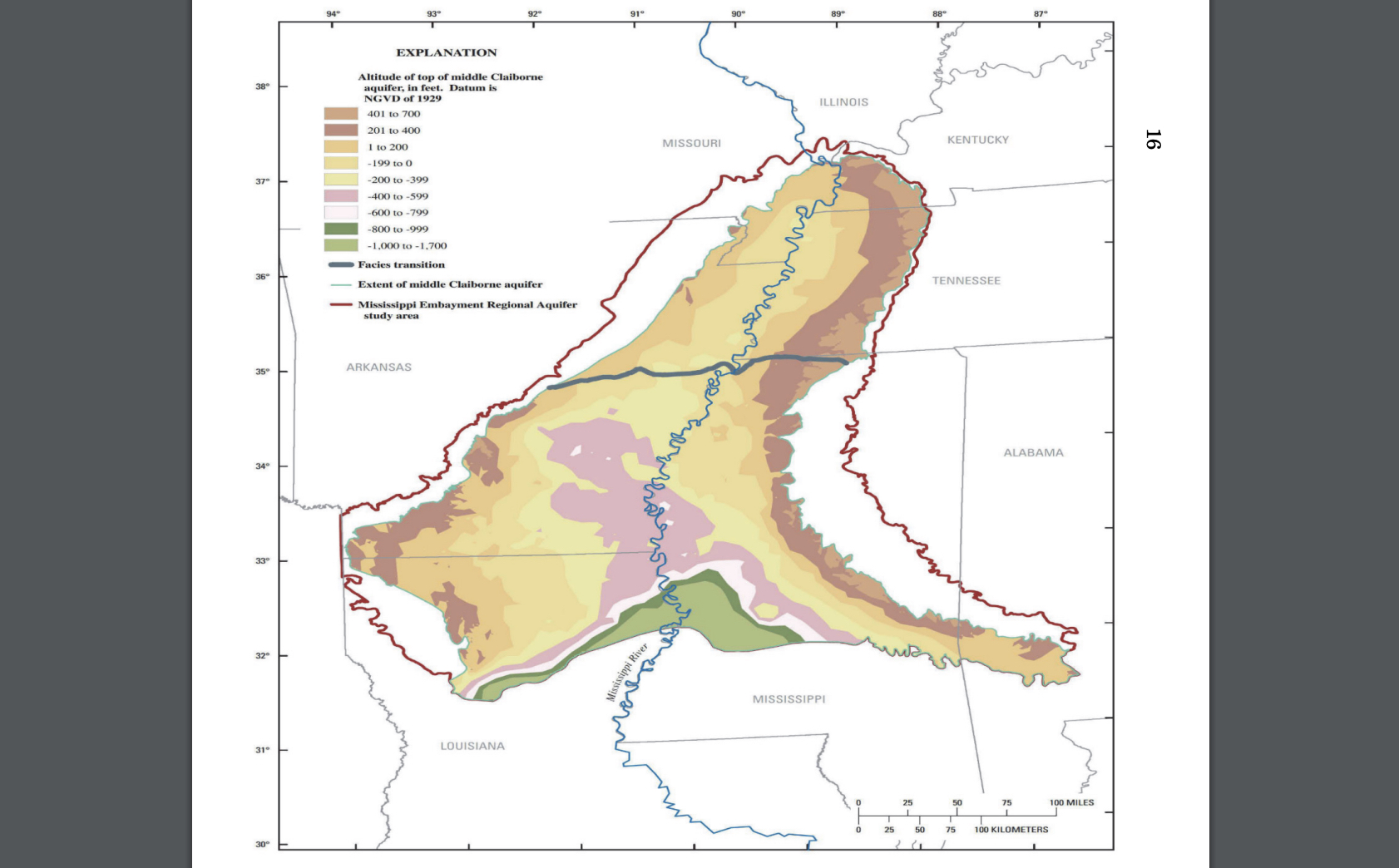OPINION ANALYSIS
In dispute over groundwater, court tells Mississippi it’s equitable apportionment or nothing

on Nov 23, 2021 at 2:18 pm

Less than two months after oral argument, in its first interstate groundwater case, the Supreme Court unanimously decided that Mississippi must rely on a doctrine known as equitable apportionment if it wants to sue Tennessee over the shared Middle Claiborne Aquifer. In an opinion by Chief Justice John Roberts, the court squarely rejected Mississippi’s claim that Tennessee is stealing Mississippi’s groundwater, noting that it had “‘consistently denied’ the proposition that a State may exercise exclusive ownership or control of interstate waters.”
The Supreme Court’s decision
As expected, the court’s opinion in Mississippi v. Tennessee is short — 12 pages, half of which recount the long history of the case. Nevertheless, in this first opinion about states’ rights to interstate aquifers, the court made three important decisions that are likely to guide future interstate disputes over natural resources.
First, the court identified three criteria for determining when equitable apportionment is the appropriate doctrine to govern an interstate dispute. Emphasizing that it has applied equitable apportionment to not only rivers and streams but also to interstate river basins, to groundwater pumping that affects surface water flows, and to anadromous fish like Chinook salmon and steelhead trout, the court stated that equitable apportionment applies only when transboundary resources are at issue. Concluding that the “Middle Claiborne Aquifer’s ‘multistate character’ seems beyond dispute,” the court moved on to its second criterion: that the water or resource “flows naturally between the States.” Importantly, it concluded that the speed of that flow doesn’t matter. Although the water in the Middle Claiborne Aquifer moves only one or two inches a day, the aquifer is still within the realm of equitable apportionment. The last criterion requires that one state’s use of the resource can affect the resource in the other state; indeed, “[s]uch interstate effects are a hallmark of our equitable apportionment cases.” Because Tennessee’s pumping of the groundwater created a “cone of depression” that crossed the border, the case met all three criteria, and “[f]or these reasons,” Roberts concluded, “we hold that the waters of the Middle Claiborne Aquifer are subject to the judicial remedy of equitable apportionment.”
Second, the court thoroughly rejected Mississippi’s sovereign ownership theory, emphasizing that states sharing a water resource must respect each other’s interests in that resource. In contrast, “Mississippi’s ownership approach would allow an upstream State to completely cut off flow to a downstream one, a result contrary to our equitable apportionment jurisprudence.”
Third, the court dismissed the recalcitrant Mississippi’s lawsuit rather than letting the state amend its complaint to assert an equitable apportionment claim. Because Mississippi had neither asked the court for leave to amend nor tendered a proposed amended complaint, it left the court with little option, procedurally, except to dismiss. Nevertheless, one can also sense the court’s mild rebuke to Mississippi’s stubborn refusal to request an equitable apportionment and the subsequent shaping of the proceedings to assess tort allegations based on the impacts of Tennessee’s pumping, rather than allowing the broader evidentiary inquiries, and perhaps joinder of more states, that an equitable apportionment would require.
Implications for the future
As climate change and drought make interstate groundwater disputes increasingly likely in the future, states now know that equitable apportionment is the background principle for sharing groundwater. Two important considerations follow for states that share aquifers.
First, conjunctive equitable apportionment is now at least theoretically possible. As the court itself noted, it has already considered groundwater pumping that affects surface water to be relevant to its interstate water decisions. By clearly subjecting both sources of water to the same legal doctrine, the court has also arguably allowed for states to trade one resource against the other. For example, a downstream state that really wants a surface water flow for ecological reasons, as Florida wanted in last term’s Florida v. Georgia, may be able to trade its rights to shared groundwater resources to get more of the shared surface water resources.
Second, the decision in Mississippi v. Tennessee makes clear, yet again, that interstate compacts offer states clear advantages over equitable apportionment. The court noted, for example, that were Mississippi to pursue equitable apportionment, it would have to show through clear and convincing evidence that it had suffered a real and substantial injury. As Florida learned last term, that is an extremely difficult burden to meet even in the surface water context, and even when fisheries and endangered species depend on the flow of water. The burden is likely to be even harder to meet in the groundwater context, where substantial injury will be difficult to show unless wells are drying up and the cost of sinking them deeper is exorbitantly high — at which point the aquifer has probably been thoroughly mined and there’s not much left to apportion. Notably, the court also distinguished the 2013 Tarrant Regional Water District v. Herrmann case, which Mississippi attempted to rely on for its territorial invasion claim, explicitly on the grounds that Tarrant involved an interstate compact. In that case, the court emphasized, “the affected States had taken it upon themselves to negotiate a compact that determined their respective rights to the resource in question,” eliminating the applicability of equitable apportionment.
In the surface water context, equitable apportionment has long been recognized to disadvantage the downstream state. In the groundwater context, in contrast, “upstream” and “downstream” are often not as clear, meaning that more states sharing groundwater may have incentive to negotiate compacts. Combining surface water and groundwater negotiations, moreover, could allow states both to deal with hydrologically connected groundwater directly and to negotiate more creative tradeoffs across resources. While Mississippi v. Tennessee is unlikely to spark a bold new era of interstate water compacts, a few states that share declining aquifers may take that opportunity now that the court has made clear the background principles against which they negotiate.


